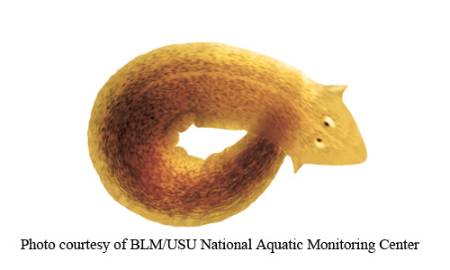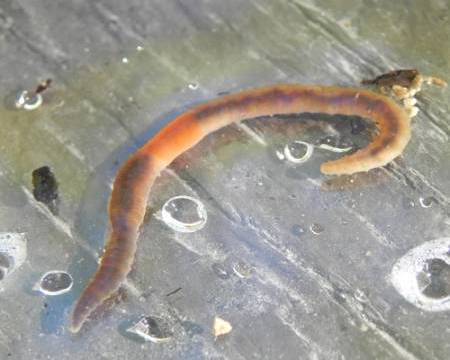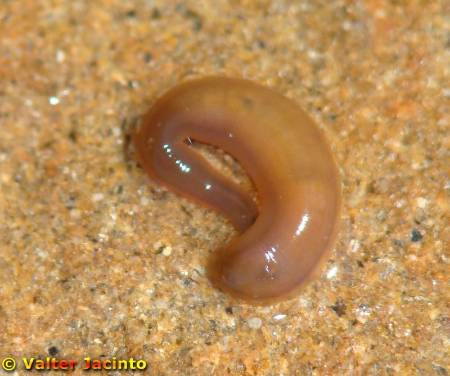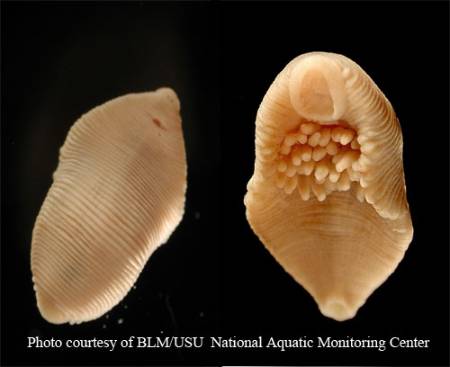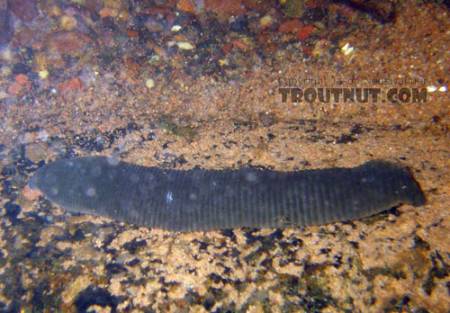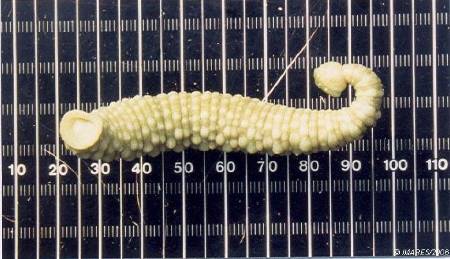| Athericidae (Watersnipe Fly) |
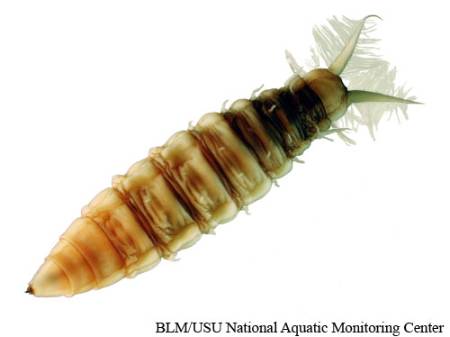 |
Athericidae have several (typically 7) pairs of well-developed ventral pro-legs, dorsal and lateral filaments on each segment, and a pair of divergent processes on the posterior end. 2-20 mm in length. |
Rapid moving freshwater, common in erosional areas in rivers and streams throughout North America. |
| Blephariceridae (Net-singed midge) |
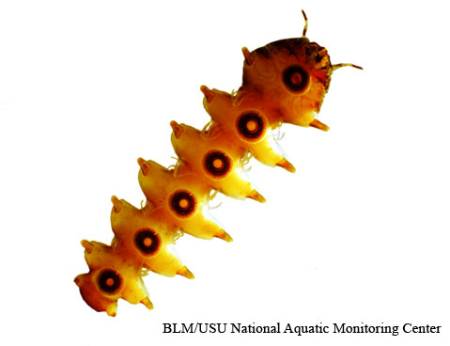 |
Blephariceridae have 7 distinct segments with a ventral sucker on each of the first 6 segments. 4-12 mm in length.Photo is a ventral view. |
Upper surface of rocks in fast moving water, occurs in mountainous regions throughout North America. |
| Ceratopogonidae (Biting midge, Buffalo gnat) |
 |
Ceratopogonidae are very slender. Prothoracic and terminal prolegs may be present or absent, if present their bodies possess well developed bristles or spines. 2-15 mm in length. |
Temporary ponds, tree holes, still and fast moving fresh water. |
| Chaoboridae (Phantom midge) |
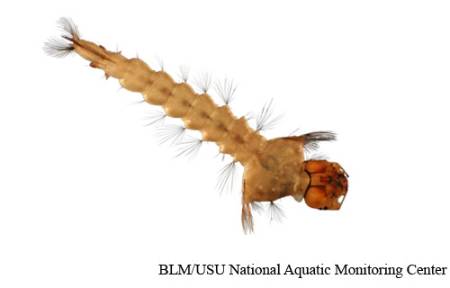 |
Chaoboridae have clear to transparent bodies. The head is separated from their thorax. 8-15 mm in length. |
Large lakes to small ponds, throughout North America in still fresh water. |
| Chironomidae (Midge) |
 |
Chironomidae have thoracic and terminal prolegs. They are slender with slightly curved bodies and a well defined head capsule. 2-20 mm in length. |
Still and fast moving water, wetlands, temporary and permanent wetted habitats throughout North America. |
| Culicidae (Mosquitoes) |
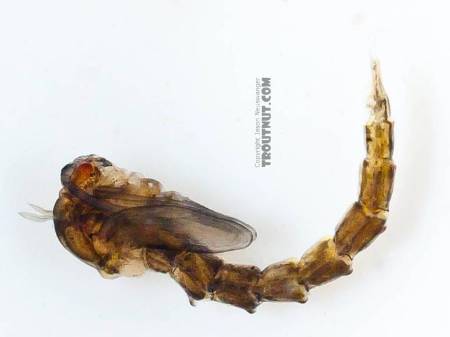 |
Culicidae larvae have no prolegs and a large head. They breath through a siphon located on the posterior end. 5-15 mm in length. |
Still and slow moving fresh water throughout North America, often found near the surface. |
| Deuterophlebiidae (Mountain Midge) |
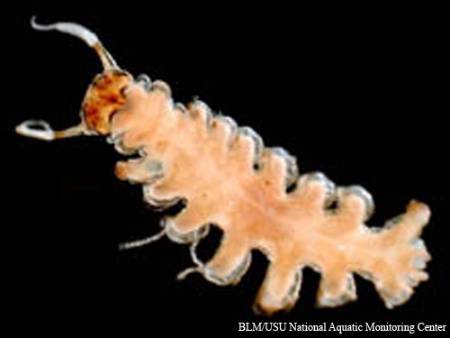 |
Deuterophlebiidae larvae have flattened bodies, sucker-like lobes on 7 pairs of prolegs, and forked antennae longer than head. 3-10 mm in length. |
Fast moving fresh water in mountainous streams throughout western North America. |
| Dixidae (Dixid midge) |
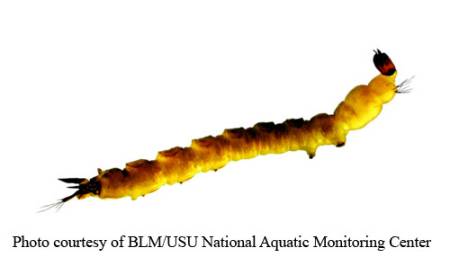 |
Dixidae are elongate and slender with 3 thoracic segments. The abdomen terminates in a breathing tube and lateral paddle-like structures. 3-7 mm in length. |
Fast and still fresh water, throughout North America in a variety of aquatic habitats. |
| Dolichopodidae (Aquatic long-legged fly) |
 |
Dolichopodidae abdomens terminate in a concave pit surrounded by short projecting lobes. Abdomen with or without prolegs. 3-10 mm in length. |
Mostly still water, occur throughout North America. |
| Empididae (Dance Fly) |
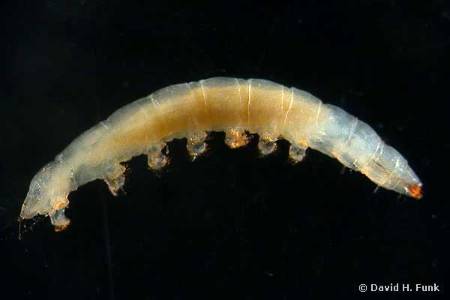 |
Empididae may have 7-8 prolegs. The anterior end of the abdomen ends in a cone shaped point. 2-7 mm in length. |
Fast moving water, occur in variety of aquatic habitats throughout North America. |
| Ephydridae (Shore Fly, Brine Fly) |
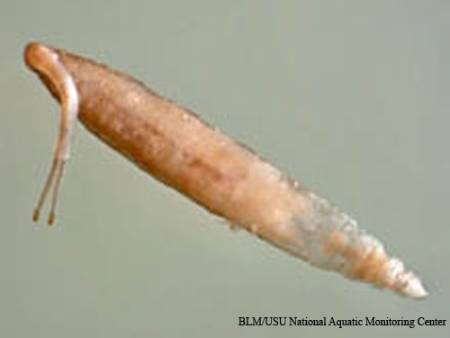 |
Ephydridae have wrinkled and extendable body, with or without prolegs. 2-12 mm in length. |
Still or slow moving water. Ephydridae can withstand hard conditions, including high salinity, temperatures and pollution. |
| Muscidae (Muscid) |
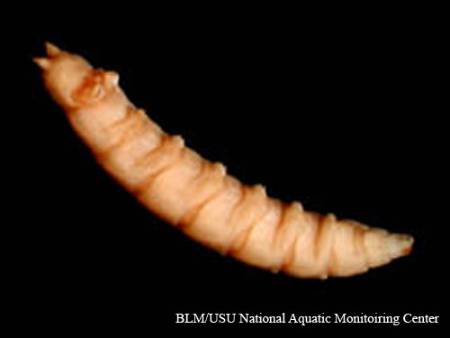 |
Muscidae have welt like prolegs and have 2 short breathing tubes. 6-14 mm in length. |
Fast moving and still water, occur in various aquatic habitats throughout North America. |
| Psychodidae (Moth Fly) |
 |
Psychodidae lack prolegs, abdominal segments are subdivided, a short hardened breathing tube at the terminal end of abdomen. Less than 5 mm in length. |
Fast moving and still fresh water, occur in clean to highly polluted waters throughout North America. |
| Ptychoperidae (Phantom Cranefly) |
 |
Ptychoperidae have extendable bodies and long extendable breathing tube. Prolegs are present on first 3 abdominal segments. 15-60 mm in length. |
Still fresh water, occur in ponds and wetlands throughout North America. |
| Sciomyzidae (Marsh Fly) |
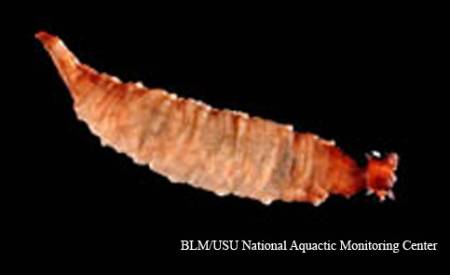 |
Sciomyzidae have elongated, cylindrical body with a pointed anterior end. Posterior end is surrounded by several short lobes and may have a breathing tube. 5-15 mm in length. |
Still water, occur in wetlands, marsh habitats throughout North America (not common). |
| Simuliidae (Black Fly) |
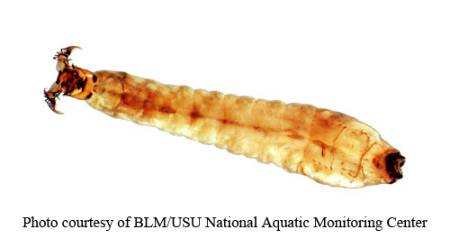 |
Larvae are cylindrical with a bulbous distal abdomen, distinct fan-like brushes occur on the sides of their head. 3-12 mm in length. |
Flowing water, occur in running water habitats throughout North America. |
| Stratiomyidae (Soldier Fly) |
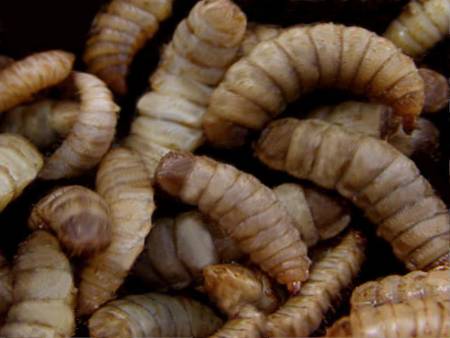 |
Stratiomyidae has a leathery feel and appearance due to calcium deposits. Head extends from thorax. No prolegs. 5-30 mm in length. |
Fast moving and some still fresh water, occurs throughout North America along aquatic habitat margins. |
| Syrphidae (Rattail maggot, Flower Fly) |
 |
Syrphidae larvae are soft-bodied, semi-transparent, and wrinkled. They breath through a long breathing tube on the posterior end. Some species have ventral prolegs. 5-25 mm in length. |
Still waters, tree holes, bogs, occur throughout North America. |
| Tabanidae (Deer Fly, Horse Fly) |
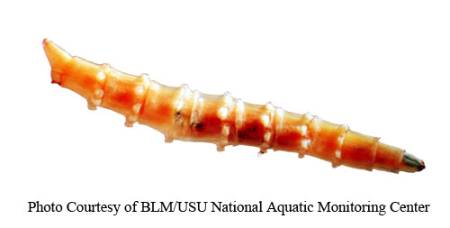 |
Larvae are elongate, cylindrical and tapers to a pointed cone at both ends, there are no breathing tubes at the posterior end of their abdomen. 10-50 mm in length. |
Fast moving and still fresh water, common throughout North America. |
| Tanyderidae (Primitive Crane Fly) |
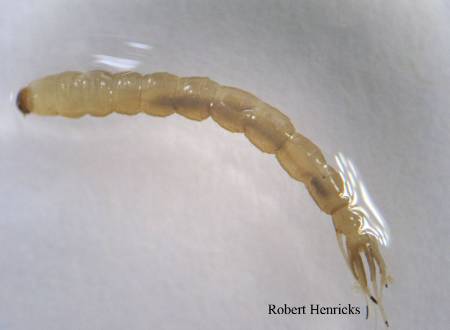 |
Larvae are slender and elongate, six long spine-like filaments that extend from the posterior end of their abdomen. 10-20 mm in length. |
Fast moving fresh water, occurs throughout North America. |
| Tipulidae (Crane Fly) |
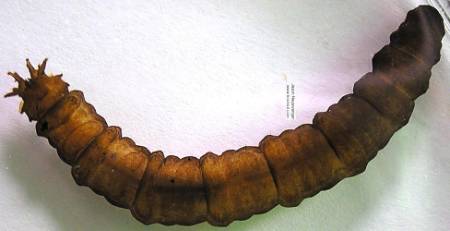 |
Larvae have elongated cylindrical shape, head capsule is retracted into their thorax, abdomen terminates in 2 spiracles that are surrounded by short fleshy lobes. 10-100 mm in length. |
Fast moving and still fresh water, occur in depositional habitats throughout North America. |





















